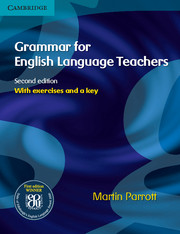Summary
Key considerations
Choosing the correct quantifier is complicated, and learners often leave them out altogether or choose the wrong one.
Each time we use a noun we have to decide if a quantifier is necessary and, if it is, which one. This choice involves the meaning of what we want to express, a range of grammatical factors and also formality.
Course materials usually introduce quantifiers systematically in small groups (e.g. some and any, much, many and a lot of, a few and a little), and teach different uses of the same quantifier at different times.
What are quantifiers?
What do they do?
Like articles, quantifiers belong to the wider class of ‘determiner’, i.e. words or phrases that come at the beginning of a noun phrase and signal whether the information is new or familiar, or (in the case of quantifiers) which tell us something about quantity.
What do they look like?
Quantifiers include the following words and expressions: all, another, any, both, each, either/neither, enough, every, few/fewer/a few, little/less/a little, many, more, much, no, several, some, a lot of.
Where do they come in sentences?
We use quantifiers at the beginning of noun phrases:
• before nouns: some thoughts.
• before adjective + noun: many enterprising people.
• before adverb + adjective + noun: any very good ideas.
We can use noun phrases in a variety of sentence positions.
How do we choose quantifiers?
Types of noun
Whether the main noun in the noun phrase is countable (singular or plural) or uncountable limits our choice of quantifier.
We use some quantifiers only when we refer to two things (e.g. both occasions, (n)either solutio).
Is the sentence affirmative, negative or a question?
We choose some quantifiers mainly in affirmative statements (i.e. neither negative nor a question), and others in negative statements or questions.
Affirmative: I’ve got some time.
Negative or question: I can’t see any problem. Do you have any ideas.
Course materials often suggest that this is a hard and fast rule, but as we see below there are many exceptions to this.
- Type
- Chapter
- Information
- Grammar for English Language Teachers , pp. 36 - 50Publisher: Cambridge University PressPrint publication year: 2010



